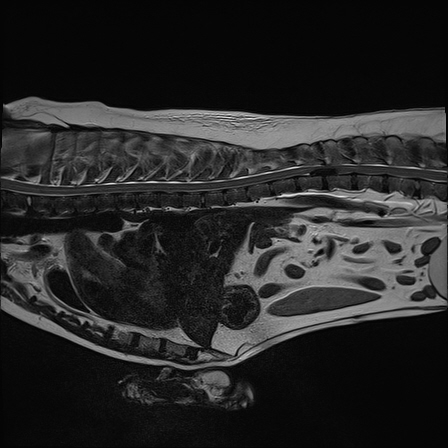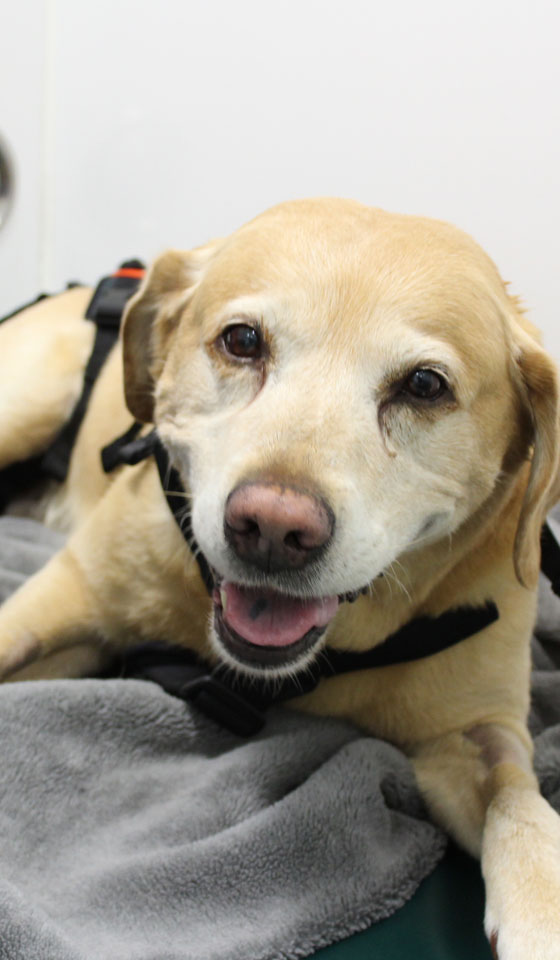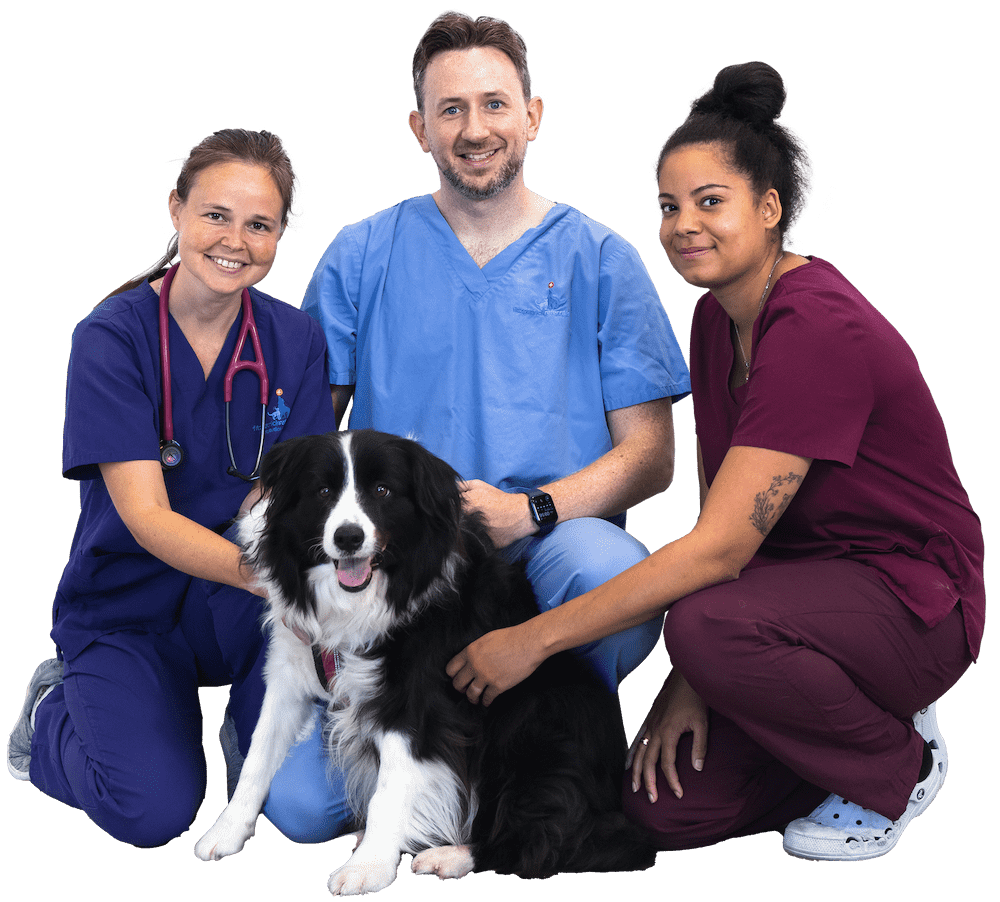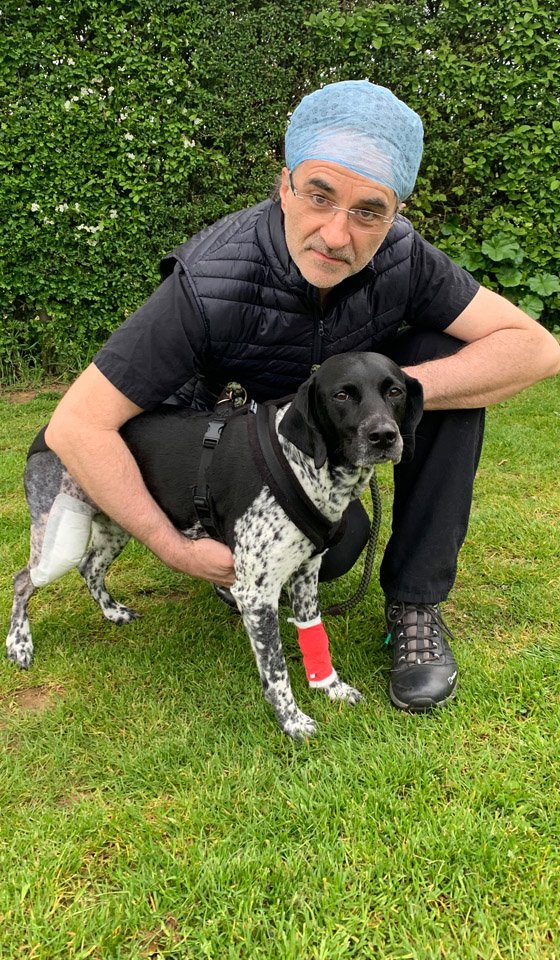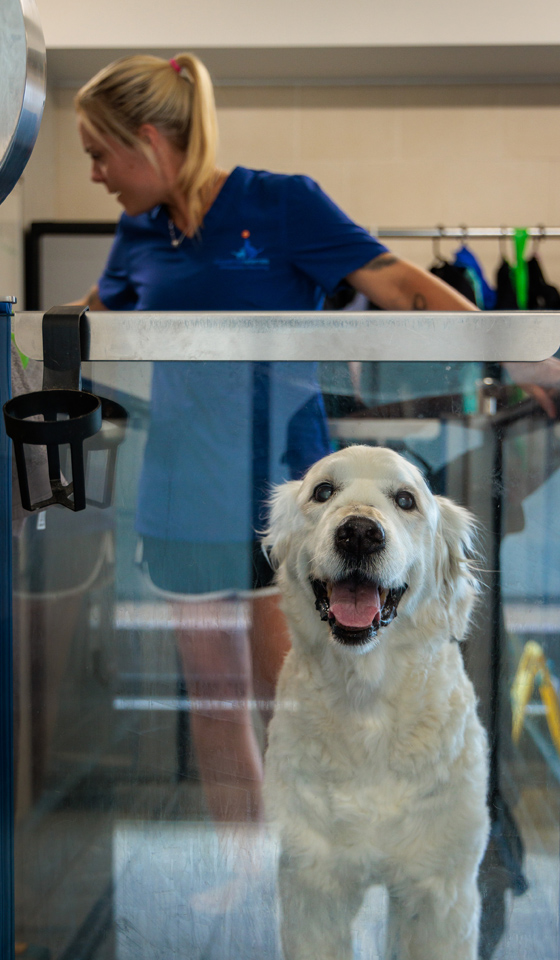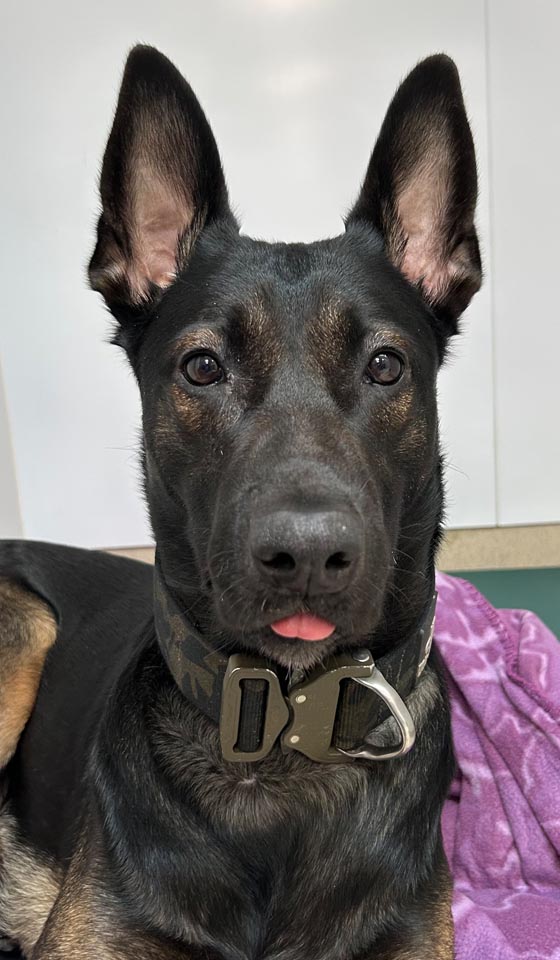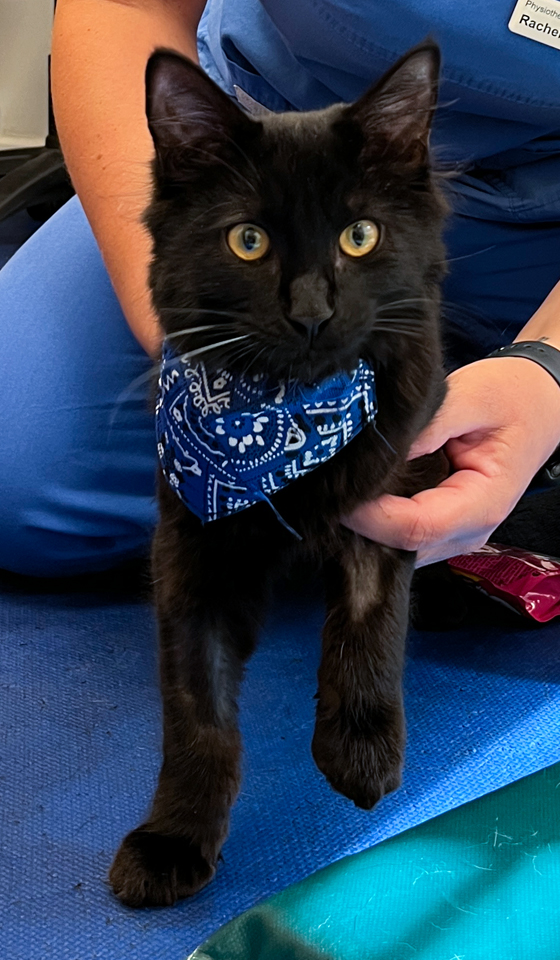Conservative management of intervertebral disc disease (IVDD)
There are many dogs diagnosed with intervertebral disc disease that do not require surgery. These dogs can be effectively managed with rehabilitation. Early intervention and support is vital, as is a thorough assessment and implementation of a staged rehabilitation treatment plan.
Physiotherapy aims
In the initial stage following diagnosis of IVDD the aims of physiotherapy will be to:
- Reduce inflammation
- Reduce pain and spasm
- Maintain soft tissues flexibility
- Improve core strength
- Stimulate sensory input
- Re-train postural responses
These above aims continue and progress with time depending on your dog’s progress. Aims will ultimately develop to include the following:
- Further strengthen core stability
- Facilitate effective gait
- Increase exercise tolerance and overall cardiovascular fitness
- Return to normal function
Physiotherapy options
Many different physiotherapeutic modalities can be employed when rehabilitating a dog undergoing conservative management of IVDD. Possible options might include – laser, or and cold therapy, massage, range of motion exercises and stretches, muscle stimulation, hydrotherapy, home exercise programme and advice re: injury prevention.
The following table is an example of a rehabilitation programme our chartered physiotherapists may use with your dog:*
| Timescale | Physiotherapy aims | Physiotherapy treatment options |
| 0-4 weeks | Reduce inflammation |
|
| Reduce muscular guarding |
| |
| Improve core stability |
| |
| Increase strength |
| |
| Increase sensation and awareness of body position |
| |
| Maintain soft tissue length and flexibility |
| |
| Management at home |
| |
| 4-6 weeks | Continue as above |
|
| ||
| 6 – 12 weeks | Increase exercise tolerance |
|
| Continue to increase core stability |
| |
| 12 weeks + | Return to full function |
|
Postoperative management of IVDD
Rehabilitation has a very important role to play during the recovery of a patient following surgery for intervertebral disc disease. Early intervention is crucial. The aims and treatment approach will vary depending on the level of disability your dog has and also the timescale following surgery. The key aims and treatment options are listed below. Your dog’s chartered physiotherapist will constantly re-evaluate progress and adjust the programme accordingly.
Physiotherapy aims
Initial phase postop:
- Reduce inflammation
- Reduce muscle spasm
- Maintain soft tissue flexibility
- Increase sensory awareness
- Increase strength
- Advise owners of home care management requirements
Weeks 4-6:
- Activate core muscles
- Progress with the above aim
- Improve balance and coordination
- Enhance gait patterns
Week 6 ongoing:
- Increase exercise tolerance and cardiovascular fitness
- Increase core stability and strength
- Return to normal function
Physiotherapy options
Similar physiotherapeutic modalities to conservative management of IVDD can be employed when rehabilitating a dog following surgery. Possible options might include – laser, hot and cold therapy, massage, range of motion exercises and stretches, muscle stimulation, hydrotherapy, home exercise programme and advice about injury prevention. The following table is an example of a rehabilitation programme our chartered physiotherapists may use with your dog.*
| Timescale | Physiotherapy aims | Physiotherapy treatment options |
| 1-2 weeks | Reduce inflammation |
|
| Reduce muscular guarding |
| |
| Maintain soft tissue length and flexibility |
| |
| Prevent bed sores (decubital ulcers) if recumbent |
| |
| Increase sensation and awareness of body position |
| |
| Increase strength |
| |
| Improve independence with postural sets |
| |
| Improve core stability |
| |
| Assist owner with management at home |
| |
| 2-4 weeks | Progress strengthening |
|
| Improve balance and co-ordination |
| |
| Ensure correct movement patterning |
| |
| Maintain full passive range of movement at all joints and soft tissue flexibility |
| |
| Improve mobility |
| |
| 4-6 weeks | Continue as above | |
| 6-12 weeks | Increase exercise tolerance |
|
| 12 weeks + | Return to previous exercise level |
|
*Please note that rehabilitation plans should only be followed under the guidance of a qualified rehabilitation professional, who will be able to provide a tailored plan based on the individual patient’s rehabilitation needs.
Hydrotherapy options
Hydrotherapy is invaluable when rehabilitating patients following surgery. The buoyancy of the water supports the patient against gravity and allows effective exercise to take place. The warmth of the water provides a source of relief for any discomfort present and the hydrostatic pressure assists in swelling reduction.
